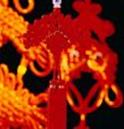http://www6.lexisnexis.com/publisher/EndUser?Action=UserDisplayFullDocument&orgId=574&topicId=100007185&docId=l:1051351188&isRss=true
...
JEFFREY BROWN: All right, so the fiber optics is the work of Charles Kao. Let`s start with that. Explain the breakthrough that he made there and what that -- and then we`ll get to what that`s led to.
MARIETTE DICHRISTINA: OK. So way back in the 1930s, medical doctors were already starting to use light pipes or fiber optics for imaging into the body in certain ways, but one particular problem that they had was that you couldn`t transmit that light very far, and it was useful for one patient or another, but not for sending information over longer distances.
The work that Kao did and the essential innovation and insight that he had there is that, if you could somehow remove some of the more, quote, "the impurities" in that light fiber, that fiber optic, then you could send more information through that tube than you could ever do previously. And how he realized...
JEFFREY BROWN: So the -- oh, I`m sorry. Go ahead. Go ahead.
MARIETTE DICHRISTINA: How he realized that was, even though at the time they had rather pure glass, he realized that, if you fused silica or quartz, you could get an even more pure glass pipe and therefore reflect light. You could think of it as if you were bouncing light down a highway made of mirrors.
JEFFREY BROWN: But the problem -- just to be clear -- the essential problem was that the transmission of light, the light would be dissipated in its travels through the glass...
MARIETTE DICHRISTINA: Right.
JEFFREY BROWN: ... so it wasn`t traveling far enough to carry the information.
MARIETTE DICHRISTINA: In Kao`s day, you could only send, let`s say, 1 percent of the light across a fiber optic tube of, say, 20 meters, which you can think of as about two school bus lengths in distance. And by that, you know, the light that you started with, you know, after it went just that short distance, 99 percent of it would be gone.
JEFFREY BROWN: The academy, I read today, they were comparing where we are today, and they said that, if they unraveled all of the fiber optics that we have today, it would now cover 600 million miles, so from his day until now, quite a difference.
MARIETTE DICHRISTINA: You could circle the globe with those fibers 25,000 times. But what`s neat about the light transmission that`s done today is, in Kao`s day, where he could only transmit, say, 1 percent of the light over that two bus lengths in distance, today we can transmit more than 95 percent of that light over a kilometer or half a mile.
JEFFREY BROWN: And what does that mean? I mean, now -- now tell us how that translates to our daily lives.
MARIETTE DICHRISTINA: Right, so this is our information highway. Today, we have the luxury of living a 24/7 instant-on Internet access with beautiful pictures, which we`ll talk about in just a minute, and all the information we want to at the touch of a button. In fact, when the Nobel Prize was announced this morning, all that information went around the world at the speed of light thanks to this invention.
...
JEFFREY BROWN: All right, let me just ask you one more thing before I let you go. I mean, you watch these Nobel prizes all the time. Some years the physics prize goes to something that only other physicists could know and love, right? And then other years, it`s like this, where it has applications in daily lives. Is there any pattern that you discern here?
MARIETTE DICHRISTINA: Right. Well, here`s one of the wonderful things about basic science research. Now, of course, the Nobel prizes acknowledge science that has transformed research and our understanding of the world and maybe even, in our case, right, we were talking about the universe, because we`re looking with the Hubble telescope at beautiful, profound images from the edge of the universe, at Mars next door.
And in the cases of the physics awards, I think one thing for us all to remember is that maybe today we don`t know why those basic research advances are going to be so important to us in our lives, but, hey, how about 10 years, 20 years from now? These basic pieces that help us understand the world around us could then change us in applied ways some years down the line.
JEFFREY BROWN: All right, Mariette DiChristina of Scientific American, thanks very much.
MARIETTE DICHRISTINA: Thanks for having me.










